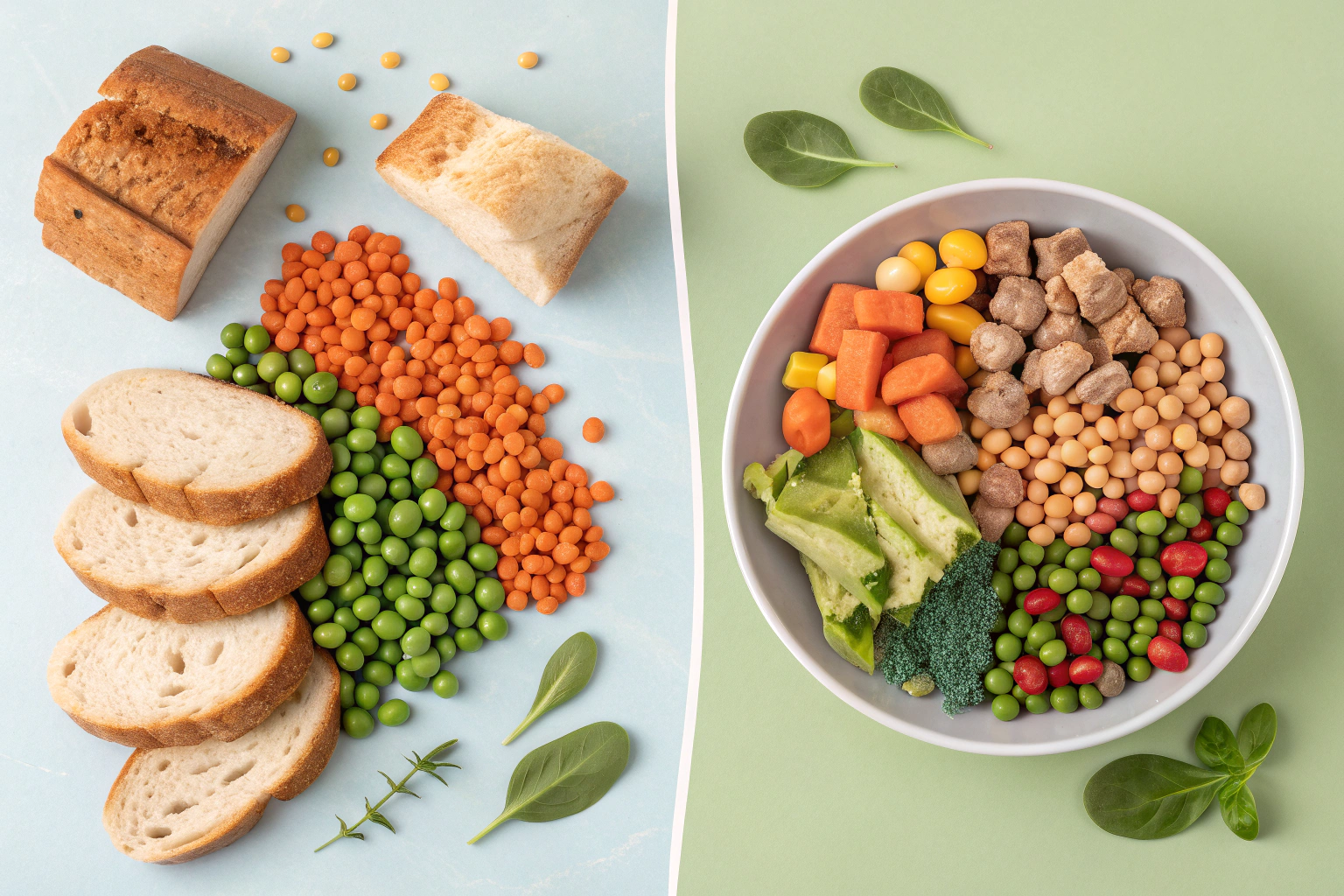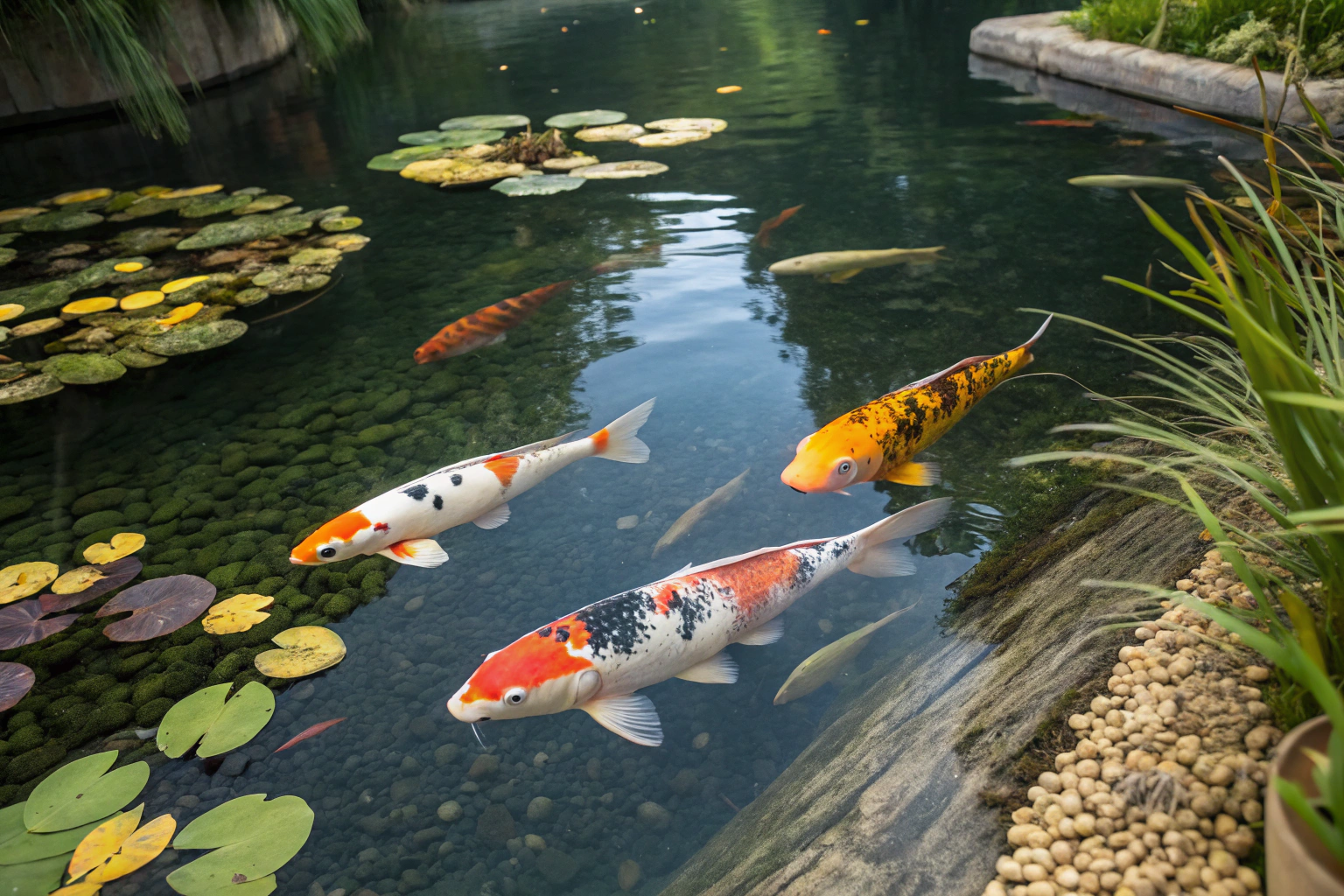Can Koi Fish Eat Bread? The Truth About Grains in Their Diet
This post may contain affiliate links.
Many pond owners and koi enthusiasts wonder whether it’s safe to feed bread to their beloved fish. While koi fish can technically consume bread, the reality is far more complex than a simple yes or no answer. Understanding the nutritional needs of koi fish and the potential consequences of feeding them inappropriate foods is crucial for maintaining their health and longevity.

The Short Answer: Why Bread Isn’t Ideal for Koi
Koi fish should not eat bread regularly. While an occasional small piece won’t immediately harm your fish, bread lacks the essential nutrients koi need to thrive and can cause several health problems over time. Bread is essentially empty calories for koi, providing carbohydrates without the protein, vitamins, and minerals these ornamental fish require.
The digestive system of koi fish is specifically adapted to process natural foods found in their aquatic environment, not processed human foods like bread. When koi consume bread, it can lead to digestive issues, nutritional deficiencies, and water quality problems in your pond.
Understanding Koi Fish Dietary Requirements
Koi fish are omnivorous creatures with specific nutritional needs that have evolved over thousands of years. In their natural habitat, koi consume a varied diet consisting of:
- Aquatic plants and algae
- Small insects and larvae
- Worms and other invertebrates
- Seeds and plant matter
- Small crustaceans
A proper koi fish diet should contain approximately 32-38% protein for adult fish, with higher protein content (38-45%) for growing juveniles. Additionally, koi require essential fatty acids, vitamins A, C, and E, calcium, phosphorus, and other trace minerals for optimal health.
Commercial koi food is specifically formulated to meet these nutritional requirements, providing balanced nutrition that supports growth, coloration, immune function, and overall vitality.
The Problems with Feeding Bread to Koi Fish
Nutritional Deficiencies
Bread contains primarily carbohydrates and lacks the protein content essential for koi health. Regular bread consumption can lead to:
- Stunted growth in young koi
- Poor coloration and faded patterns
- Weakened immune system
- Reduced lifespan
- Reproductive issues
Digestive Complications
The digestive system of koi fish isn’t designed to process wheat and other grains found in bread. This can result in:
- Bloating and constipation
- Intestinal blockages
- Swim bladder disorders
- Increased susceptibility to bacterial infections
Water Quality Issues
When bread dissolves in pond water, it creates several environmental problems:
- Rapid decomposition leads to ammonia spikes
- Increased organic matter promotes harmful bacterial growth
- Oxygen depletion in the water
- Algae blooms due to excess nutrients
- Cloudy water conditions
These water quality issues can stress your koi and make them more vulnerable to diseases and parasites.

Safe Grain Options for Koi Fish
While bread isn’t suitable, some grains can be offered to koi in moderation as occasional treats:
Brown Rice
Cooked brown rice (without salt or seasonings) can be offered sparingly. It’s easier to digest than bread and provides some nutritional value.
Oatmeal
Plain, cooked oatmeal can serve as an occasional treat, but should never replace regular koi food.
Corn
Fresh or frozen corn kernels (not canned) can be offered occasionally, though they’re high in carbohydrates.
Remember that even these “safe” options should only comprise a small percentage of your koi’s diet – no more than 10% of their total food intake.
What to Feed Your Koi Instead
High-Quality Commercial Koi Food
The foundation of any koi diet should be premium koi pellets specifically formulated for their nutritional needs. Look for foods that contain:
- High protein content (32-45% depending on season and fish age)
- Essential amino acids
- Omega-3 and omega-6 fatty acids
- Color-enhancing ingredients like spirulina and astaxanthin
- Immune-boosting vitamins and minerals
Natural Food Options
Supplement commercial food with these natural alternatives:
Vegetables:
- Lettuce and leafy greens
- Peas (shelled and blanched)
- Carrots (grated or finely chopped)
- Sweet potatoes (cooked and mashed)
Protein Sources:
- Earthworms
- Bloodworms
- Brine shrimp
- Daphnia
Fruits (occasional treats):
- Watermelon (seedless)
- Oranges (small pieces)
- Grapes (cut in half)

Seasonal Feeding Considerations for Koi
Koi feeding requirements change throughout the year based on water temperature and their metabolic needs:
Spring and Summer (Active Season)
- Feed high-protein food 2-4 times daily
- Water temperature above 60°F (15°C)
- Focus on growth and color enhancement
Fall (Preparation for Winter)
- Gradually reduce feeding frequency
- Switch to wheat germ-based foods that are easier to digest
- Stop feeding when water temperature drops below 50°F (10°C)
Winter (Dormant Season)
- No feeding required when water temperature is below 50°F
- Koi enter a state of torpor and don’t actively digest food
Understanding these seasonal feeding patterns is crucial for maintaining healthy koi throughout the year.
Signs of Poor Nutrition in Koi Fish
Watch for these warning signs that may indicate your koi aren’t receiving proper nutrition:
- Faded or dull coloration
- Lethargy and reduced activity
- Poor growth rates
- Frequent illness or infections
- Abnormal swimming behavior
- Loss of appetite
- Visible weight loss or bloating
If you notice any of these symptoms, evaluate your feeding practices and consult with a veterinarian specializing in aquatic animals.

Creating a Balanced Feeding Schedule
Establishing a consistent feeding routine helps maintain optimal koi health:
Daily Feeding Guidelines:
- Feed only what your koi can consume in 5-10 minutes
- Remove any uneaten food to prevent water quality issues
- Adjust portion sizes based on water temperature and fish activity levels
- Vary the diet to ensure complete nutrition
Weekly Feeding Schedule Example:
- Monday, Wednesday, Friday: High-protein pellets
- Tuesday, Thursday: Vegetable treats
- Saturday: Natural protein sources (worms or shrimp)
- Sunday: Fasting day (beneficial for digestion)
The Economic Impact of Proper Koi Nutrition
While high-quality koi food may seem expensive compared to bread, proper nutrition is actually more cost-effective in the long run. Well-fed koi experience:
- Fewer health problems requiring veterinary care
- Longer lifespans (20-30+ years with proper care)
- Better growth rates and more vibrant colors
- Improved resistance to diseases and parasites
Investing in proper koi nutrition saves money on medical treatments and ensures you can enjoy your fish for decades.

Environmental Considerations
Feeding appropriate foods to your koi also benefits the pond ecosystem:
- Reduces waste and maintains water clarity
- Prevents nutrient imbalances that promote algae growth
- Supports beneficial bacteria populations
- Minimizes the need for water treatments and chemicals
A healthy pond ecosystem creates a more enjoyable experience for both you and your koi.
Common Myths About Koi Feeding
Myth 1: “Koi will eat anything, so bread is fine”
While koi are opportunistic feeders, their ability to eat something doesn’t mean it’s nutritionally appropriate or safe.
Myth 2: “Wild koi eat grains, so domestic koi can too”
Wild koi (carp) may occasionally consume grains, but they have access to diverse natural foods that balance their diet.
Myth 3: “A little bread won’t hurt”
Even small amounts of inappropriate food can contribute to long-term health problems and water quality issues.
Conclusion: Prioritizing Koi Health Over Convenience
While the convenience of feeding bread to your koi might seem appealing, the potential consequences far outweigh any perceived benefits. Bread lacks essential nutrients, can cause digestive problems, and contributes to poor water quality in your pond.
Instead, invest in high-quality commercial koi food and supplement with appropriate natural foods. Your koi will reward you with vibrant colors, active behavior, and years of enjoyment. Remember that proper nutrition is one of the most important aspects of koi fish care, directly impacting their health, longevity, and quality of life.
By understanding what koi fish should and shouldn’t eat, you’re taking an important step toward becoming a responsible koi keeper. Your fish depend on you for their nutritional needs, and providing them with appropriate food is both a privilege and a responsibility that shouldn’t be taken lightly.
For more comprehensive information about koi care, feeding schedules, and pond maintenance, explore our complete guide to raising healthy koi fish.
